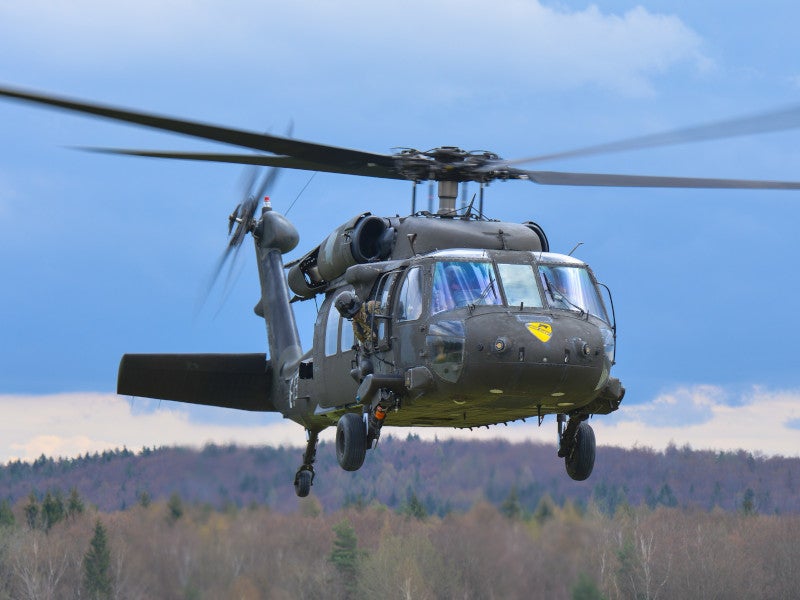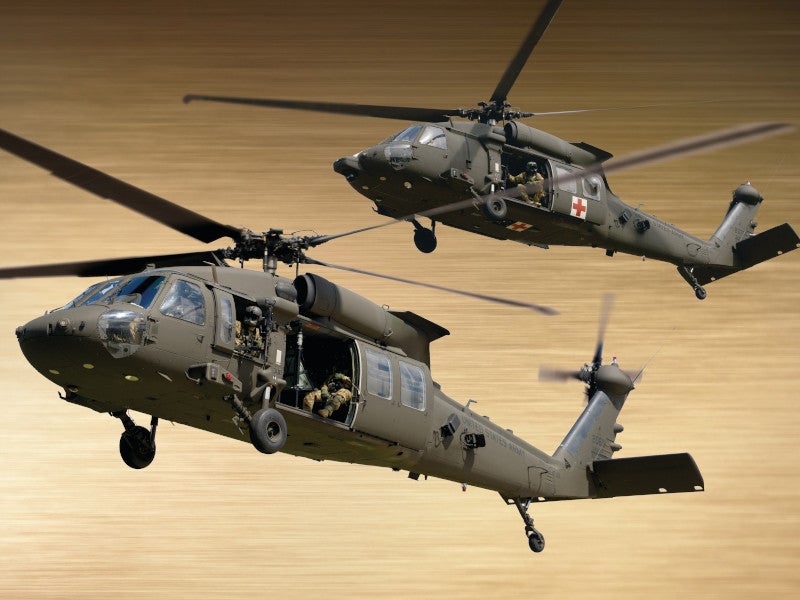Comprehending the Mechanics and Engineering Behind Uh 60 Helicopters
The UH-60 helicopter, typically understood as the Black Hawk, stands as a pinnacle of contemporary rotorcraft innovation, symbolizing a blend of robust engineering and elaborate auto mechanics. As we peel back the layers of the UH-60's style, a world of elaborate systems and careful engineering comes to light.
History of UH-60 Helicopters
The history of UH-60 helicopters traces back to the late 1970s when the USA Military sought a advanced and functional energy helicopter to replace its aging fleet. In reaction to this need, the Sikorsky Airplane Company created the UH-60 Black Hawk helicopter. Presented in 1979, the UH-60 swiftly ended up being a staple in military procedures as a result of its impressive capabilities.
The UH-60 was made to master a range of missions, consisting of army transportation, medical discharge, electronic warfare, and unique procedures. Its capacity to adapt to different duties made it an important asset to the U.S. uh 60. Army and various other military pressures all over the world
Over the years, the UH-60 system has undergone several upgrades and variations to enhance its efficiency and equal developing goal demands. These helicopters have actually seen considerable solution in disputes such as the Gulf Battle, Afghanistan, and Iraq, showcasing their dependability and versatility in diverse functional environments. The UH-60's abundant background is a testament to its long-lasting legacy as a leading utility helicopter.

Engine and Power Systems
Utilizing cutting-edge propulsion technology, UH-60 helicopters are furnished with innovative engine and power systems to make sure ideal performance and reliability in a series of functional circumstances. The UH-60, frequently called the Black Hawk, is powered by two General Electric T700-GE-701D engines, each efficient in supplying up to 1,940 shaft horse power. These turboshaft engines supply the required thrust for the helicopter to perform its objectives effectively, including army transport, medical discharge, and battle support.

Rotor System and The Rules Of Aerodynamics
How do the blades system and the rules of aerodynamics of UH-60 helicopters contribute to their operational performance and trip abilities? The rotor system of the UH-60 helicopter plays an essential role in providing lift and propulsion.
The rules of aerodynamics likewise play an essential duty in the efficiency of UH-60 helicopters. The streamlined fuselage and blades blade layout minimize drag, permitting the helicopter to accomplish greater speeds and much better gas effectiveness. The aerodynamic layout of the UH-60 likewise contributes to its capability to operate in varied ecological conditions, consisting of high altitudes and warm temperature levels.
Avionics and Trip Control Solution

In its elaborate control with the rotor system and aerodynamics of UH-60 helicopters, the avionics and trip control systems form an essential network of modern technologies shaping the airplane's operational capacities. Avionics encompass the digital systems used for communication, navigation, and checking various airplane functions. In the UH-60, these systems include electronic displays, interaction radios, general practitioner navigation, climate radar, and autopilot systems. These avionics systems supply vital info to the pilots, boosting situational understanding and ensuring efficient and risk-free procedure of the helicopter.
The trip control systems of the UH-60 are accountable for translating the pilot's inputs into the proper changes to the blades system, guaranteeing steady trip and ability to move. These systems contain hydraulic actuators, servos, and computers that collaborate to control the tail and major rotors, in addition to various other trip control surface areas. By precisely handling the helicopter's trip characteristics, these systems enable pilots to do a vast array of objectives, from transportation and search-and-rescue to deal with procedures, with precision and confidence.
Function and Applications in Air Travel
The function and applications of avionics and flight control systems in aviation are essential to making sure the reliable and risk-free procedure of aircraft, including UH-60 helicopters. Avionics systems in UH-60 helicopters encompass a range of electronic systems that help in navigating, interaction, tracking, and managing various aircraft functions. These systems consist of electronic screens, autopilot systems, communication radios, GPS navigation tools, and climate radar. Trip control systems play a critical duty in steering the helicopter airborne, preserving stability, and ensuring specific motions. The fly-by-wire technology made use of in modern-day UH-60 helicopters equates pilot inputs into digital he has a good point signals, which are then interpreted by the flight control computers to adjust the aircraft's control surface find more areas. Additionally, these systems include safety and security attributes such as autopilot settings, terrain awareness alerting systems, and stability enhancement systems to enhance the total security and functional abilities of the UH-60 helicopters in various objectives, including army transport, clinical evacuation, search and rescue, and airborne firefighting.
Final Thought
In conclusion, the UH-60 helicopter is a flexible aircraft with a rich history and advanced design. Its engine and power systems, blades system, aerodynamics, avionics, and flight control systems all function with each other to make it a trustworthy and reliable machine.
In its complex control with the blades system and the rules of aerodynamics of UH-60 helicopters, the avionics and trip control systems create an essential network of technologies shaping the airplane's functional capacities.The trip control systems of the UH-60 are liable for converting the pilot's inputs right into the suitable adjustments to the rotor system, ensuring stable trip and ability to move. Avionics systems in UH-60 helicopters include a variety of electronic systems that help in navigating, interaction, tracking, and controlling various airplane features. Additionally, these systems integrate security features such as auto-pilot modes, terrain recognition alerting systems, and stability augmentation systems to boost the general safety and functional abilities of the UH-60 helicopters in various missions, consisting of troop transportation, medical discharge, search and rescue, and aerial firefighting.
Its engine and power systems, rotor system, the rules of aerodynamics, avionics, and flight control systems all function together to make it a reliable and Get the facts trusted maker.